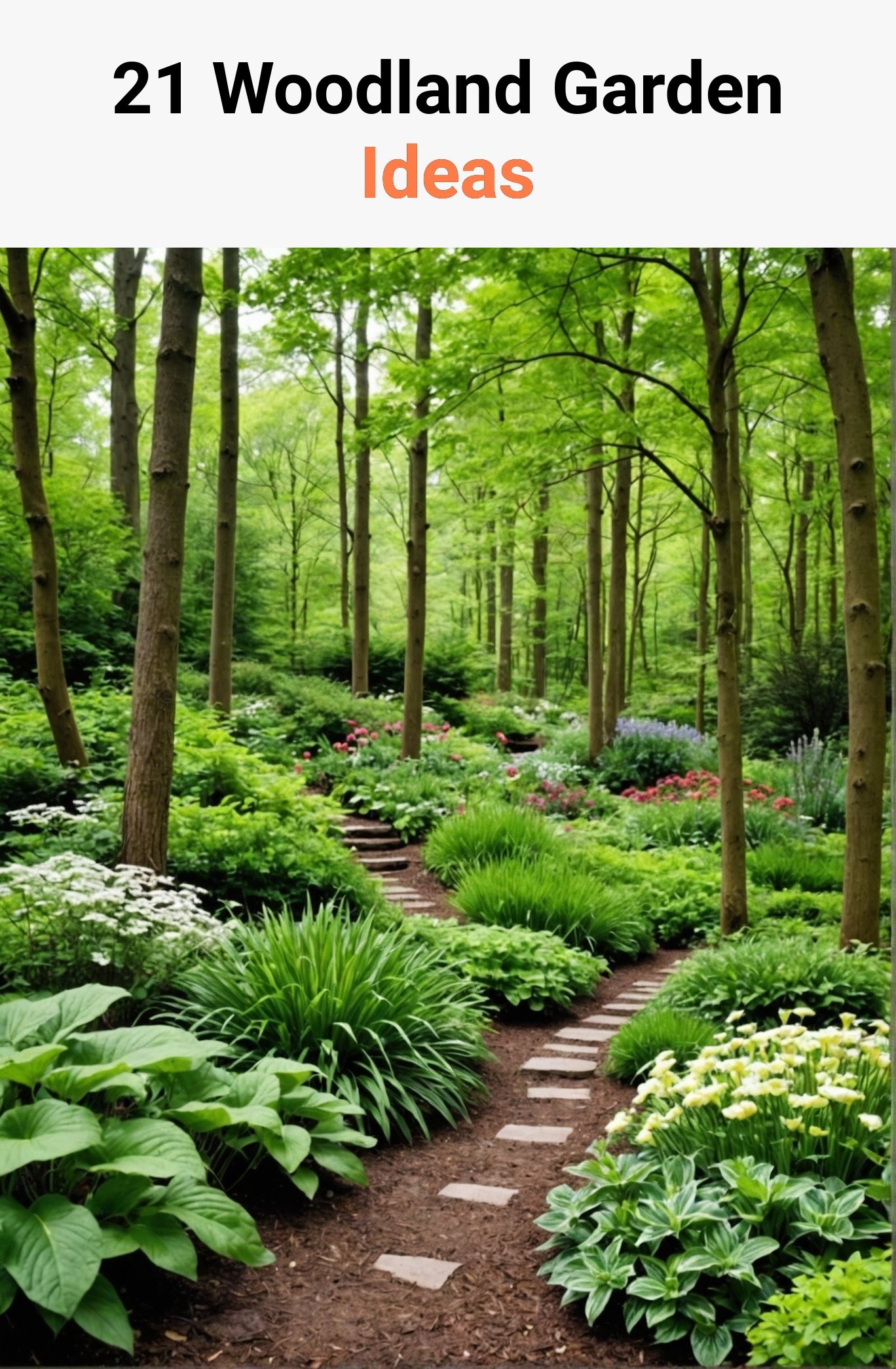Beautiful Plants For Your Interior
Beautiful Plants For Your Interior
Transform your outdoor space with stunning woodland garden ideas that blend nature’s beauty with creativity. From incorporating native plants to adding charming decorative elements, these concepts will inspire you to create a serene retreat.
Discover ways to enhance your garden’s aesthetic while fostering a vibrant and inviting environment for both you and local wildlife.
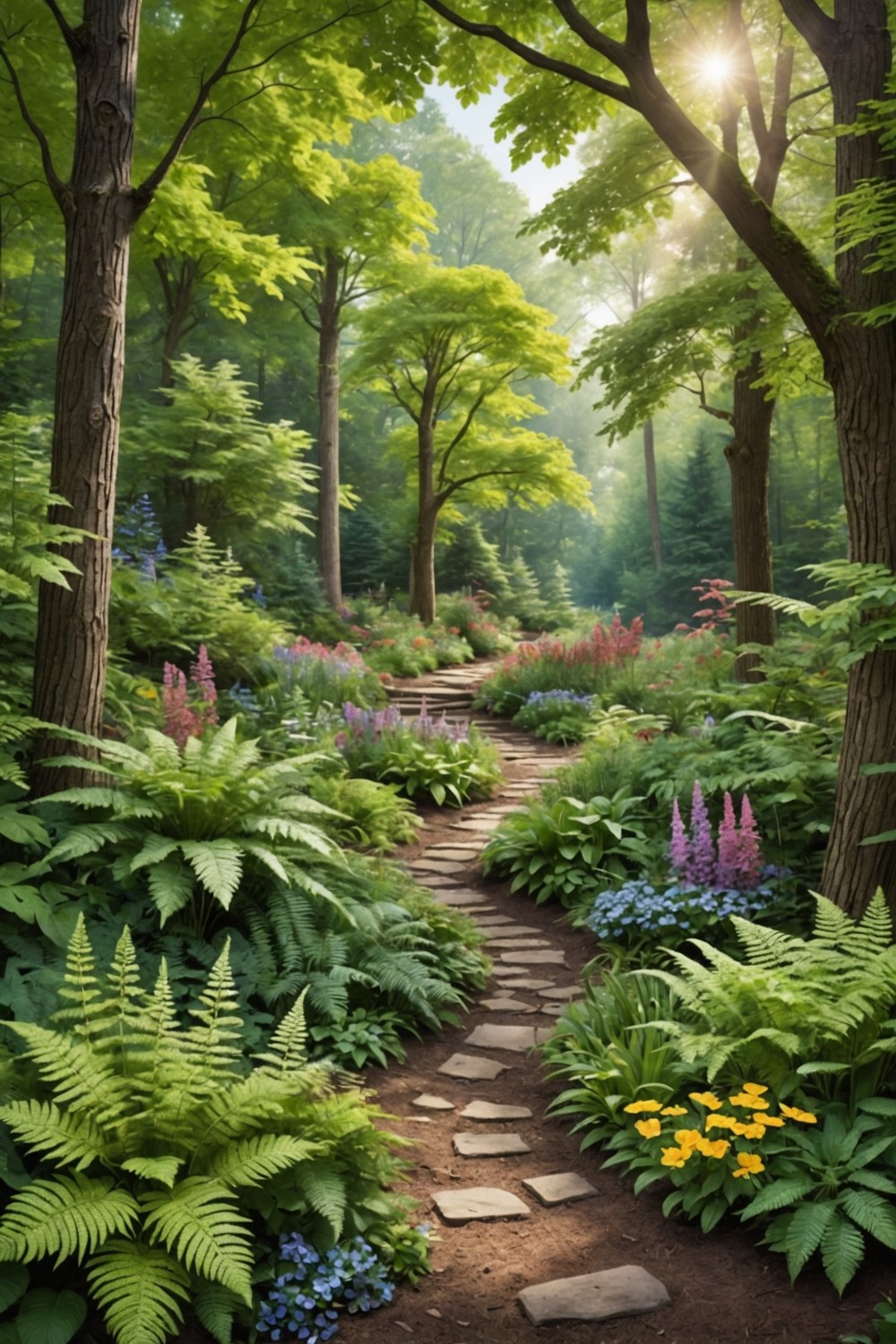
Incorporating native plants can greatly enhance woodland gardens. These plants thrive in the local climate and soil, requiring less water and maintenance.
They attract beneficial wildlife like pollinators and birds, seamlessly fitting into the ecosystem.
Consider adding ferns, wildflowers, and small trees that are indigenous to your region to create a more vibrant and sustainable landscape. Not only will this add beauty, but it will also support local biodiversity.
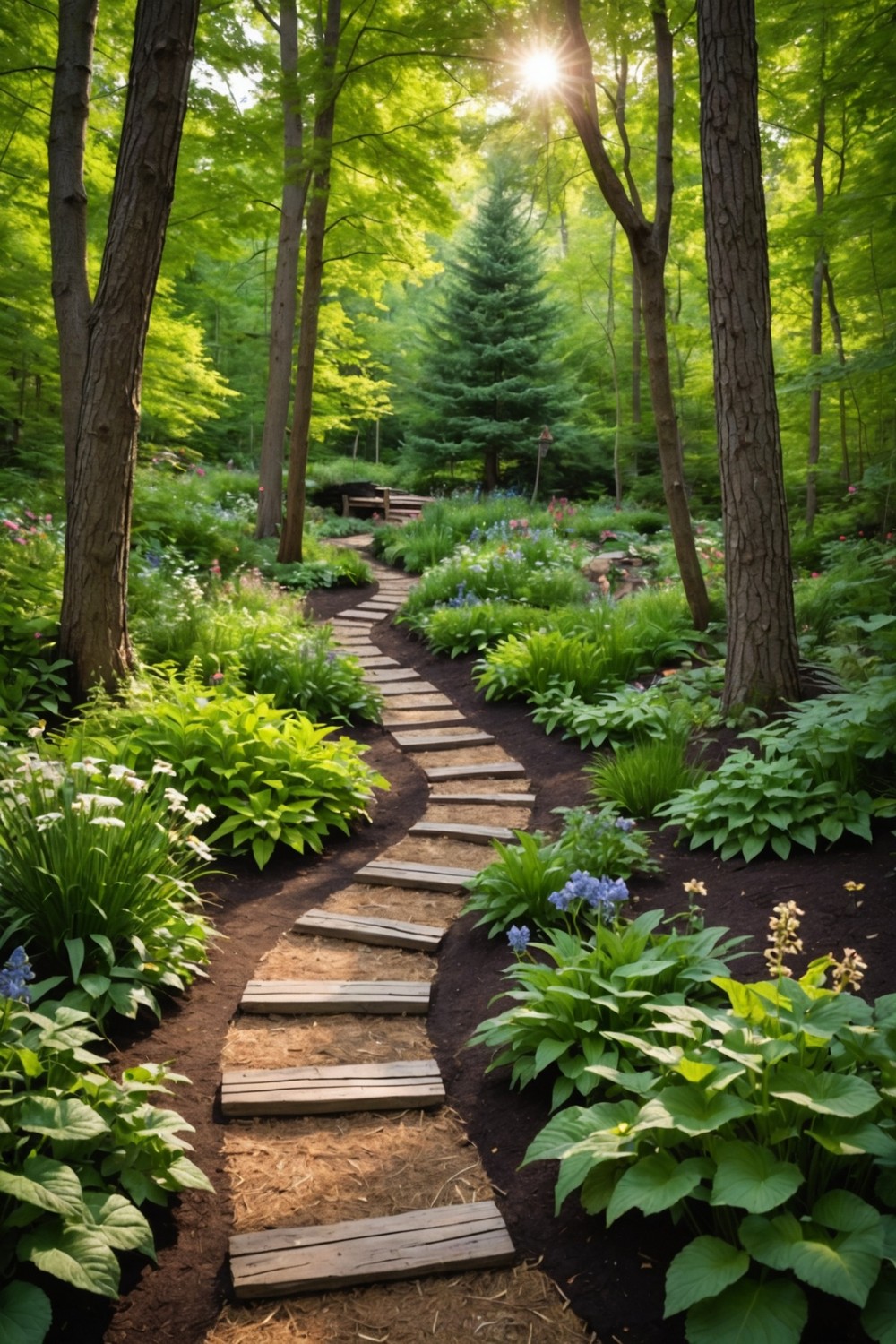
A mulched pathway adds both beauty and functionality to woodland gardens. It provides a natural look while helping to suppress weeds and retain moisture in the soil.
To create one, first clear the area of debris and lay down landscape fabric to prevent unwanted growth.
Then, apply a thick layer of organic mulch, such as bark or wood chips, ensuring it’s about 2 to 4 inches deep. Regularly refreshing the mulch not only maintains its appearance but also enriches the soil.
This pathway encourages exploration while promoting a healthy garden ecosystem.
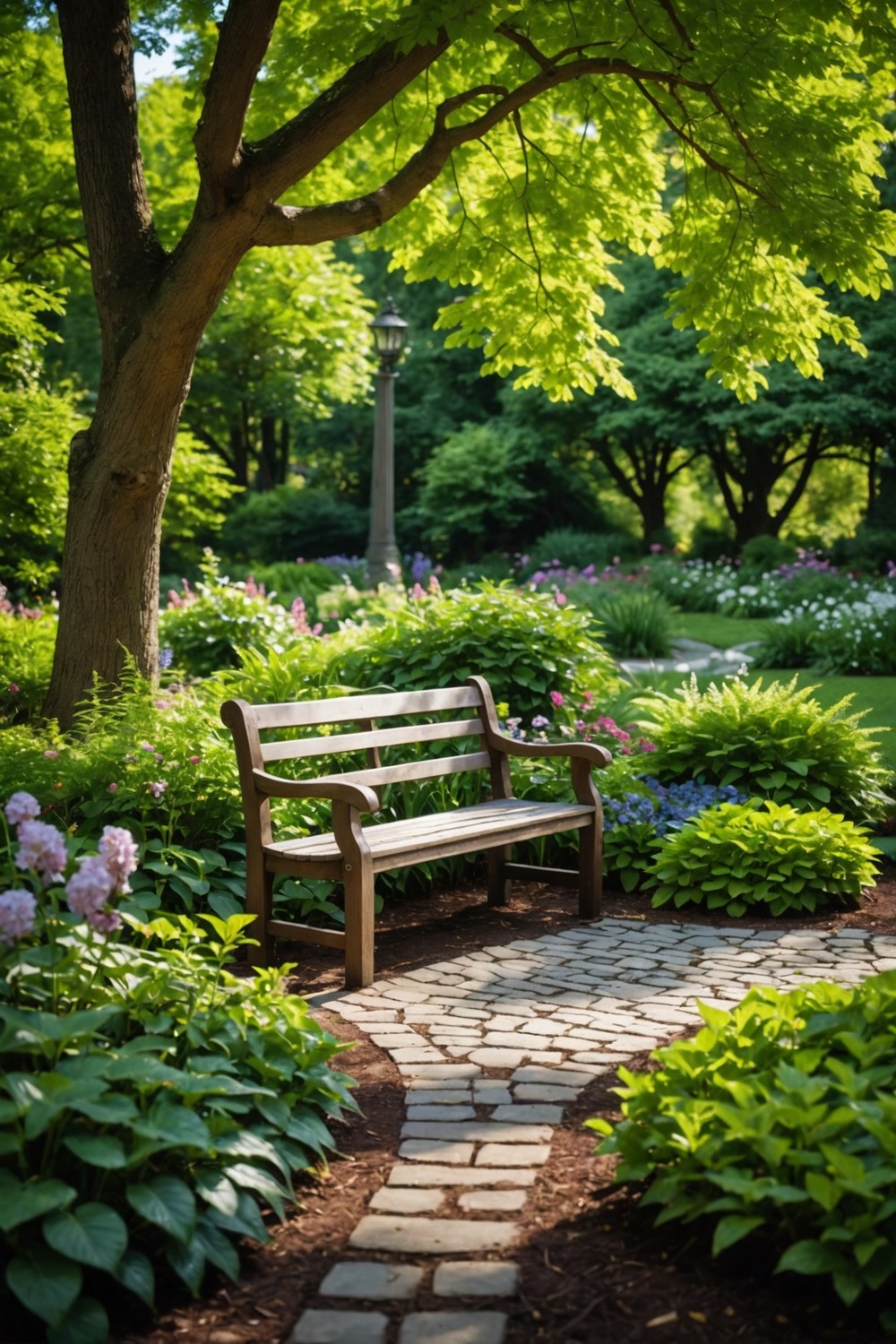
A bench can serve as a stunning focal point in a woodland garden, inviting visitors to pause and appreciate the surrounding beauty.
Choose a bench that complements the natural materials of the garden, such as wood or stone, to create harmony.
Position it strategically amongst vibrant plants or under a flowering tree, allowing it to frame views of your favorite garden spots.
Surrounding the bench with carefully selected plants can enhance its appeal and provide a peaceful nook for relaxation.
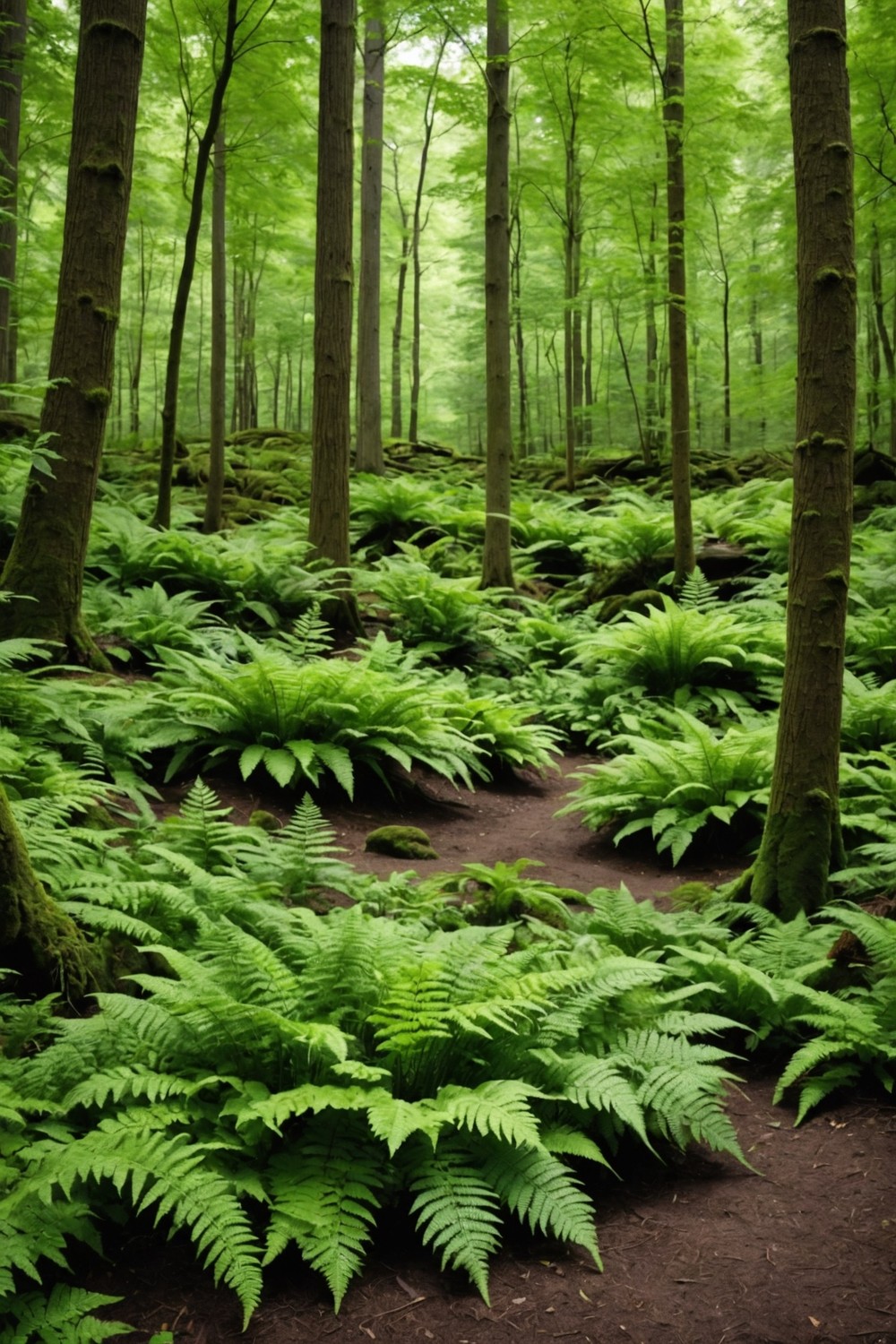
Ferns make an excellent choice for ground cover in woodland gardens due to their lush foliage and ability to thrive in shady conditions. They spread easily, creating a beautiful green carpet that suppresses weeds and stabilizes soil.
With various species available, you can choose ferns that fit your specific soil type and moisture levels, enhancing the overall aesthetic of your garden.
Their rich textures and varying heights add depth, while their resilience ensures a thriving landscape throughout the seasons.
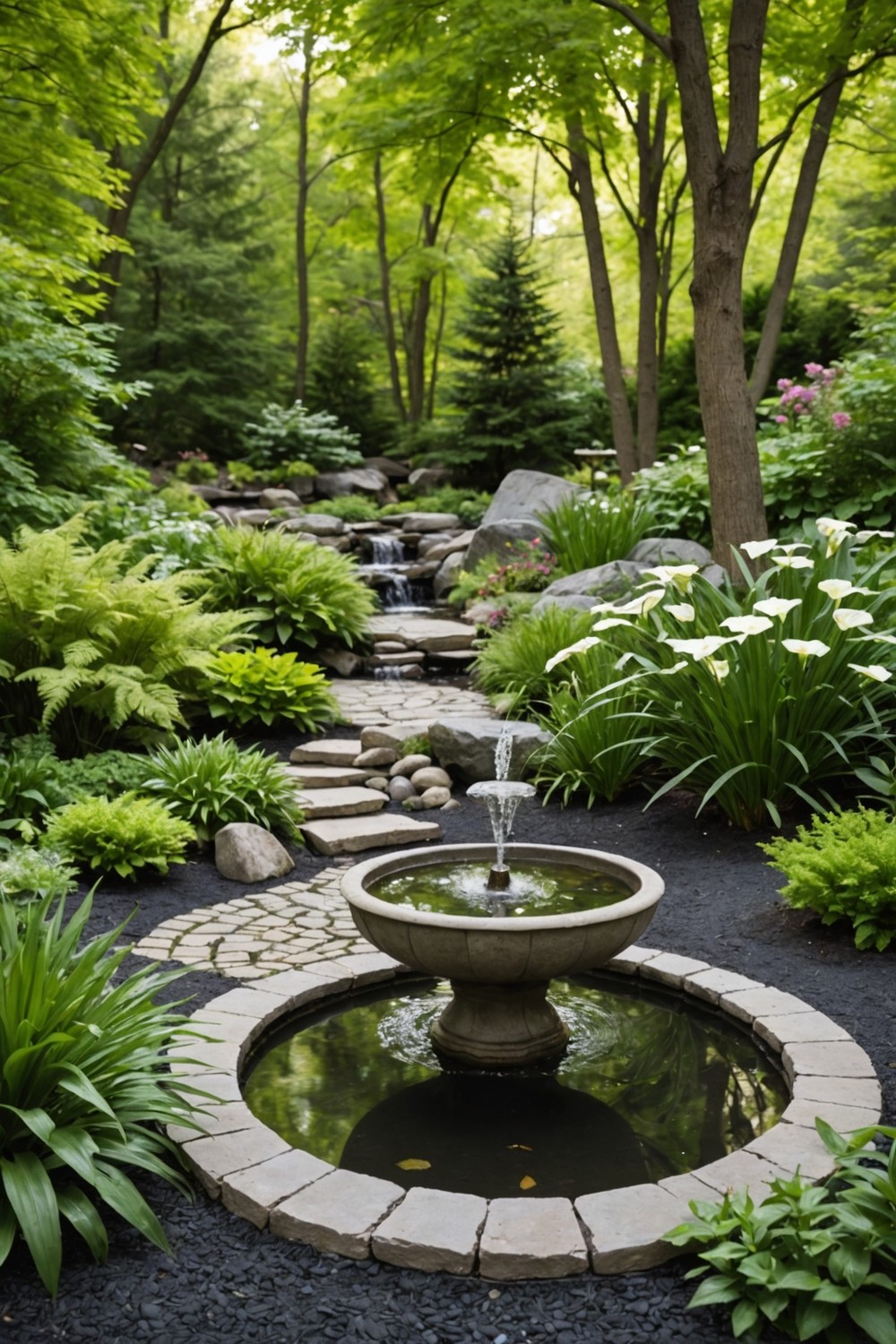
Installing a tranquil water feature transforms your woodland garden into a serene oasis. Consider adding a small pond, fountain, or a simple birdbath to create soothing sounds and reflections that invite relaxation.
Choose natural materials that blend seamlessly with the landscape, like stones or wood.
Surround your water feature with native plants to enhance biodiversity and provide shelter for wildlife. This not only beautifies your space but also promotes a calming atmosphere that encourages you to unwind.
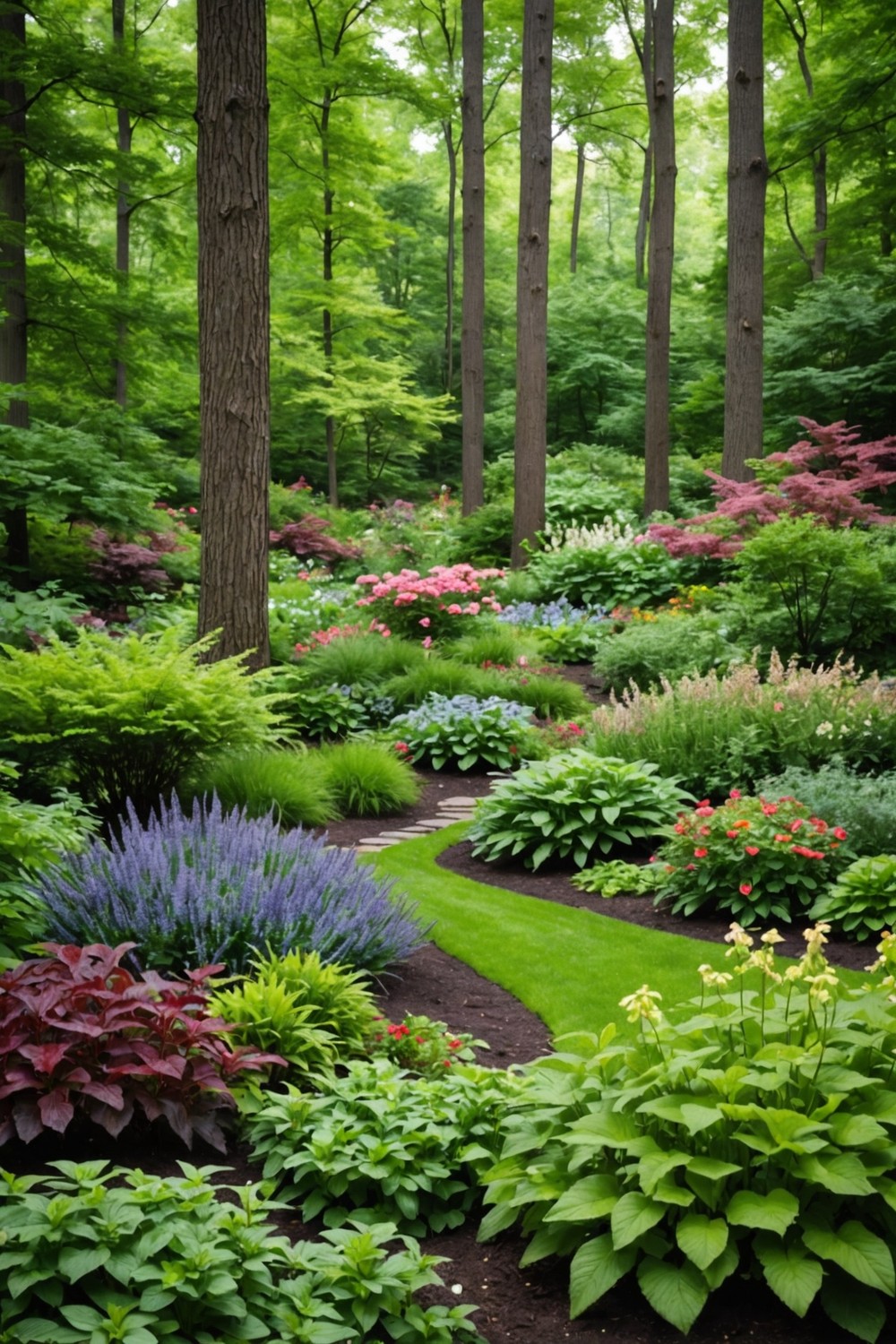
Layered planting beds add depth and visual interest to woodland gardens.
Start with taller plants in the back, such as native trees or large shrubs, providing a natural backdrop.
Next, incorporate medium-height perennials or flowering shrubs that thrive in partial shade, creating a lush mid-layer.
Finally, fill in the front with low-growing ground covers or smaller plants, which not only complete the look but also help suppress weeds and retain moisture in the soil.
This multi-tiered approach mimics nature and enhances the overall ecology of the garden.
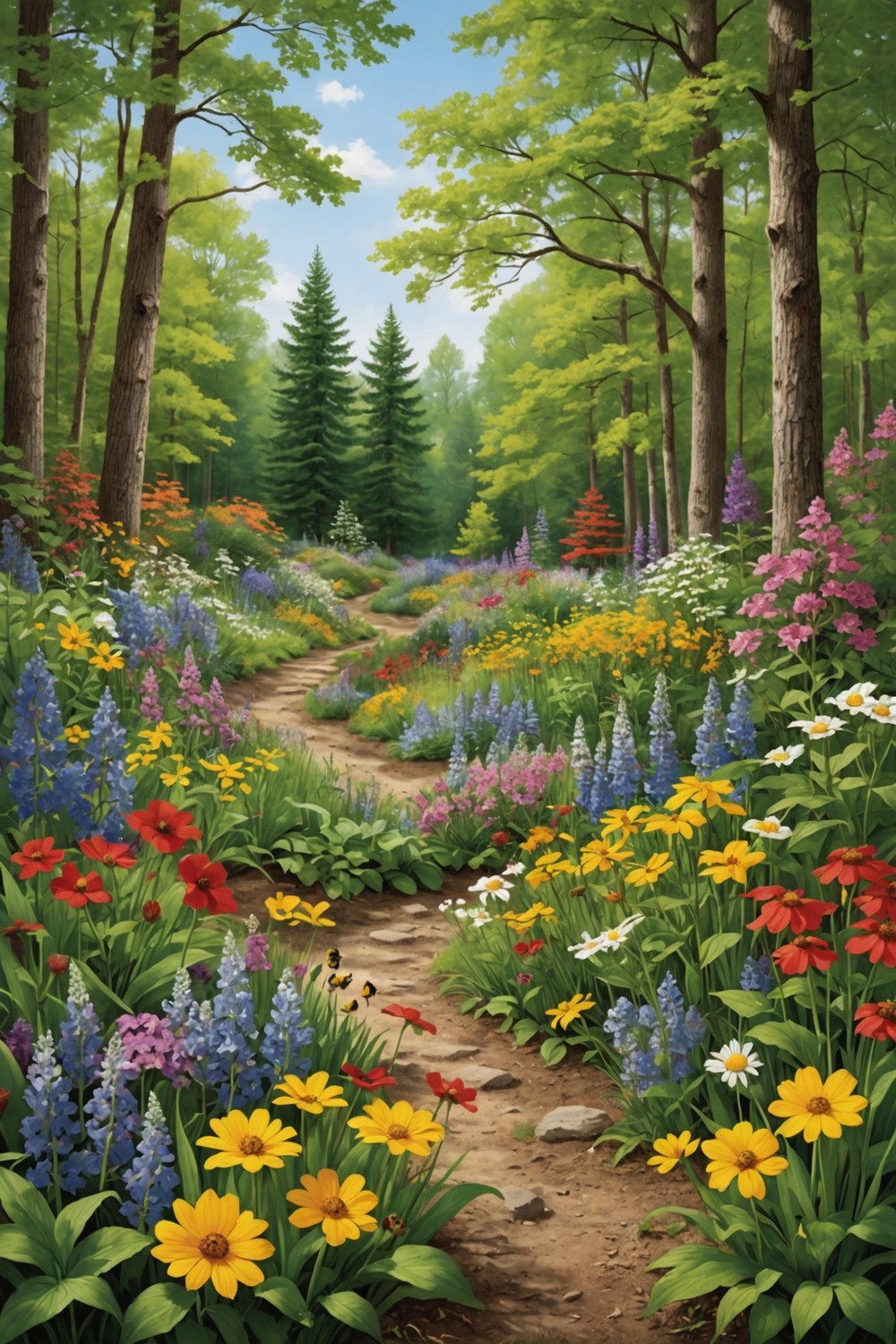
Incorporating wildflowers into your woodland garden adds a splash of color while promoting biodiversity. These native plants support local pollinators and require less maintenance than traditional garden flowers.
Choose a mix of species that bloom at different times to ensure vibrant displays throughout the seasons.
Plant them in clusters for a natural look, letting them mingle with existing flora. This approach enhances the beauty of your garden while fostering a healthy ecosystem.
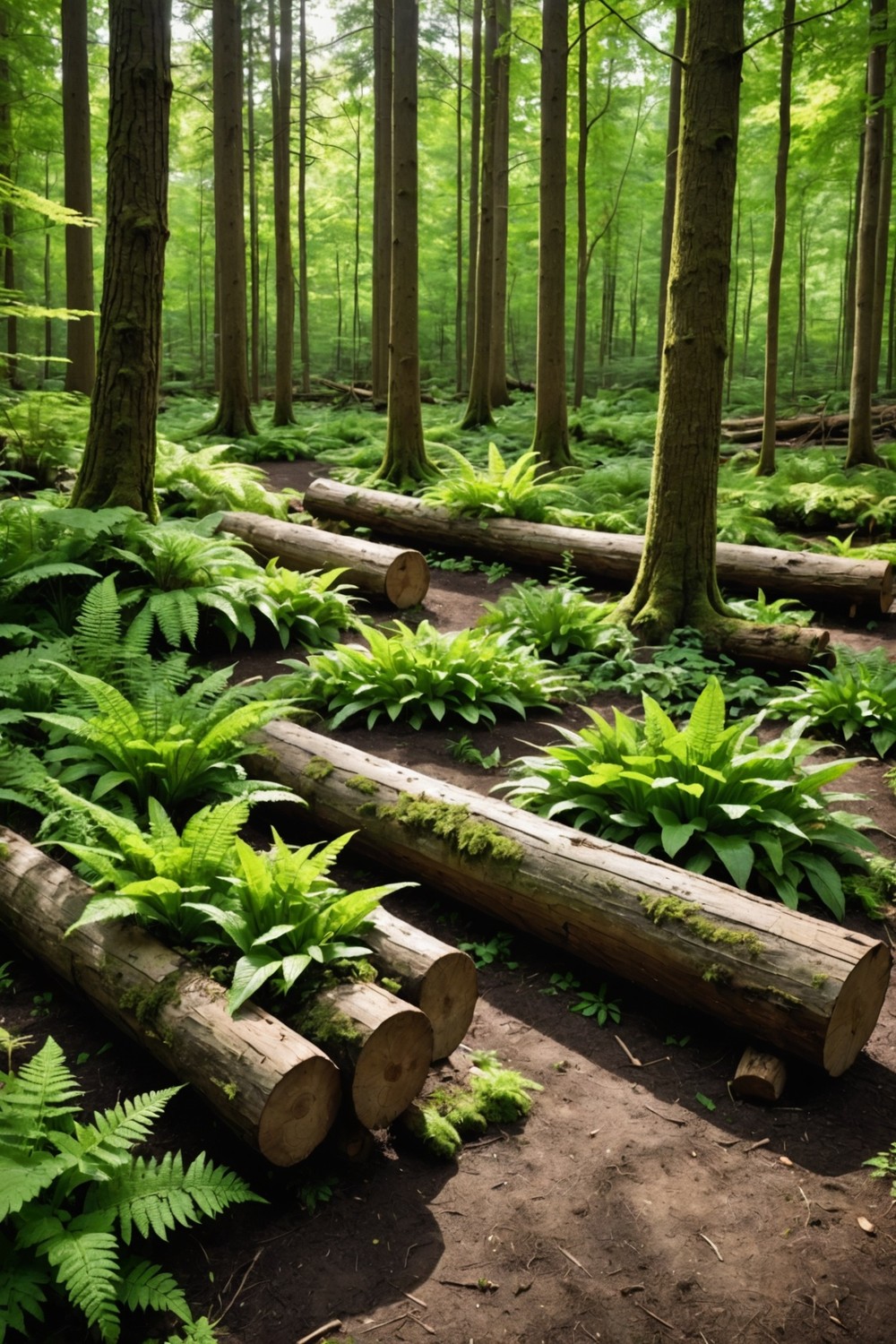
Building rustic log planters adds a charming, natural touch to any woodland garden. Start by selecting logs that are solid and free from rot.
Cut them to your desired length and hollow out the center to create a planting space.
Drill drainage holes in the bottom to prevent waterlogging. Fill the planter with quality soil and choose plants that thrive in woodland conditions, such as ferns and hostas.
Not only does this enhance the garden’s aesthetics, but it also supports biodiversity.
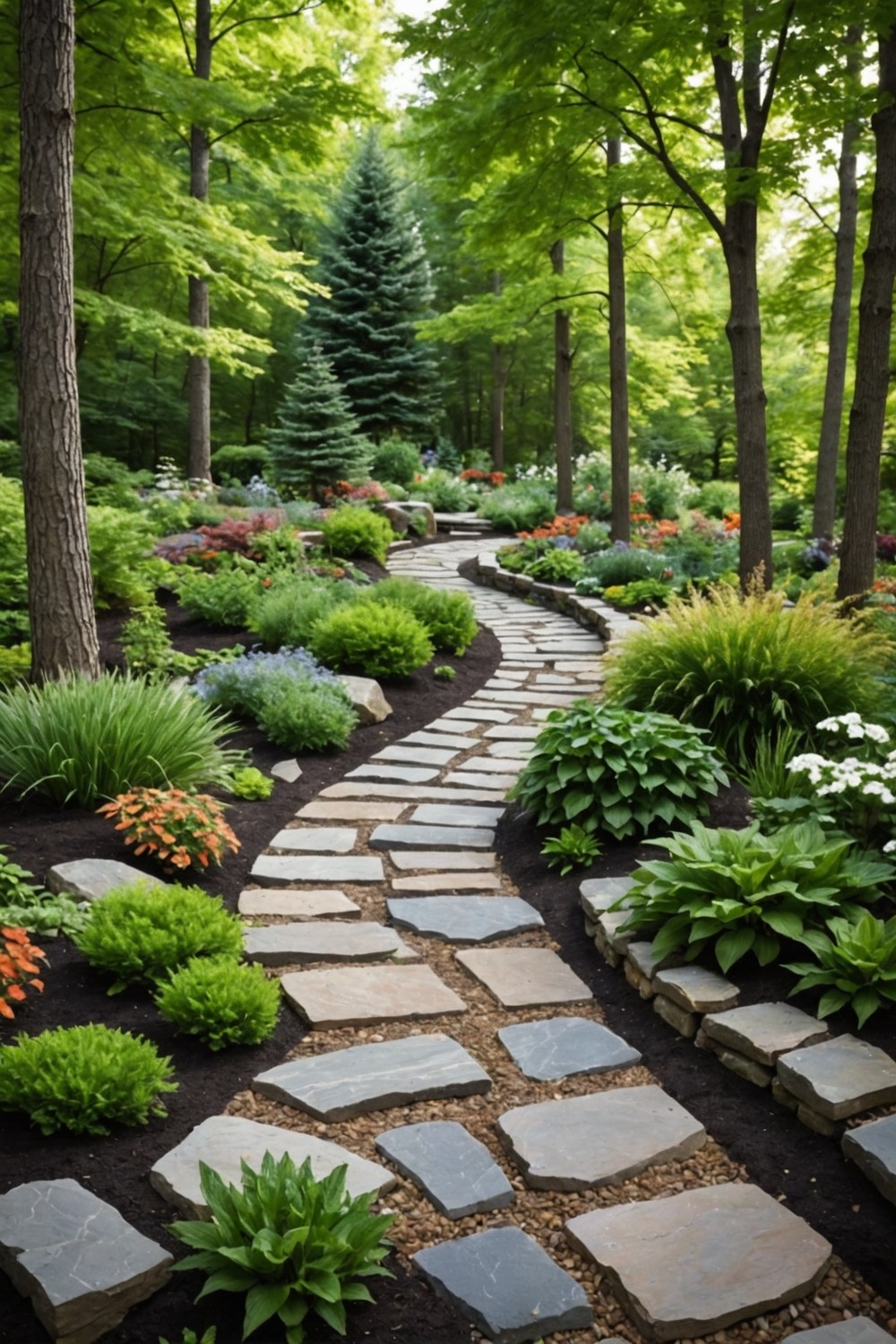
Adding decorative stone borders can transform the look of your woodland garden. These borders not only define pathways and garden beds but also bring a natural, rustic charm to your outdoor space.
Choose stones that complement the colors of your plants and the overall aesthetic of your garden.
The right arrangement can create visual interest, guide visitors through the garden, and provide a sturdy edge that keeps soil in place. Consider combining different shapes and sizes of stones for a more dynamic look.
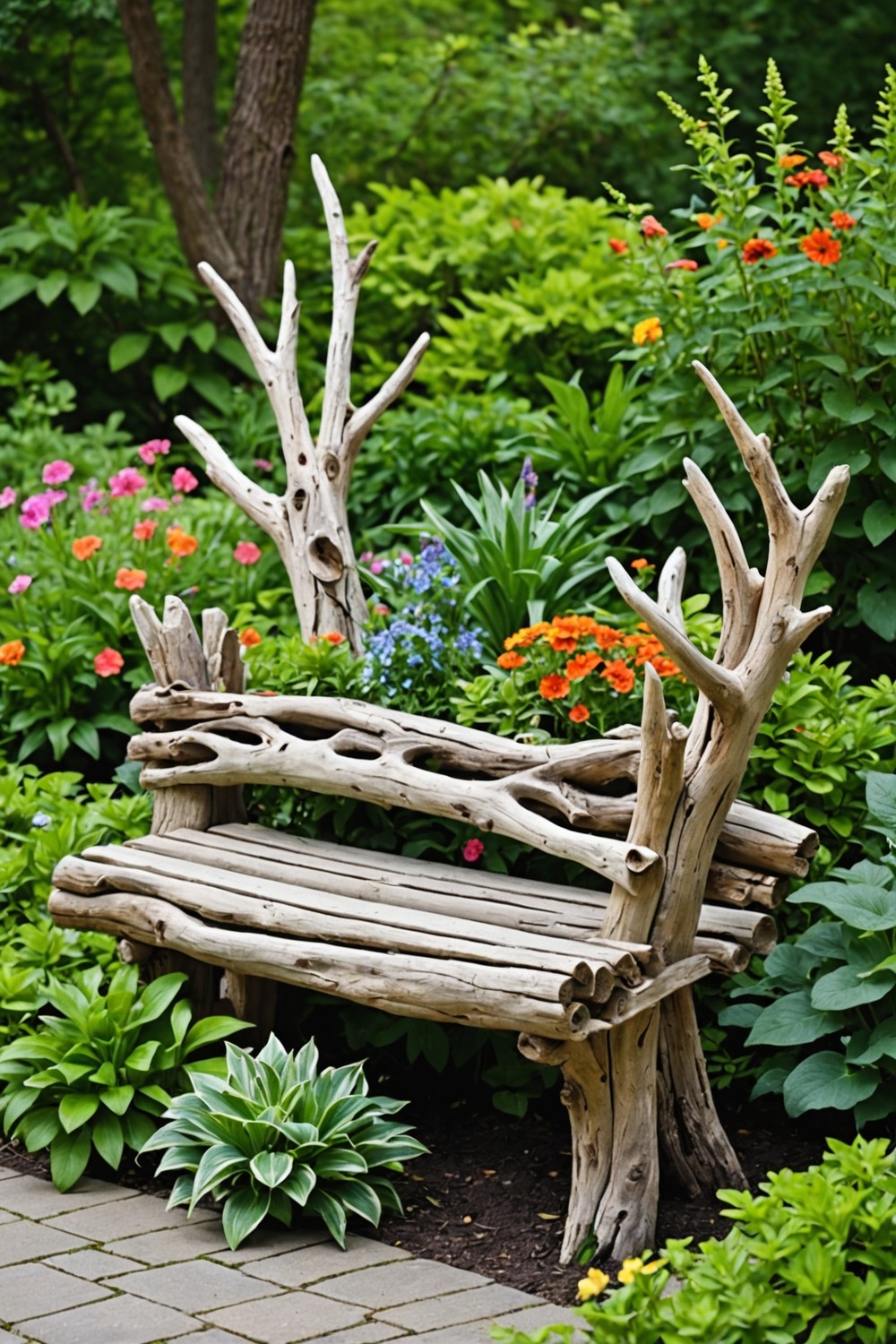
Driftwood brings a unique, organic touch to garden art.
Its natural shapes and textures can be transformed into stunning sculptures, trellises, or decorative benches.
Positioning pieces of driftwood among plants adds visual interest and creates a rustic charm that complements the greenery.
Arrange smaller pieces in clusters or use larger trunks as focal points.
Seal any exposed wood for longevity, allowing the artistry of nature to enhance your garden’s beauty effortlessly.
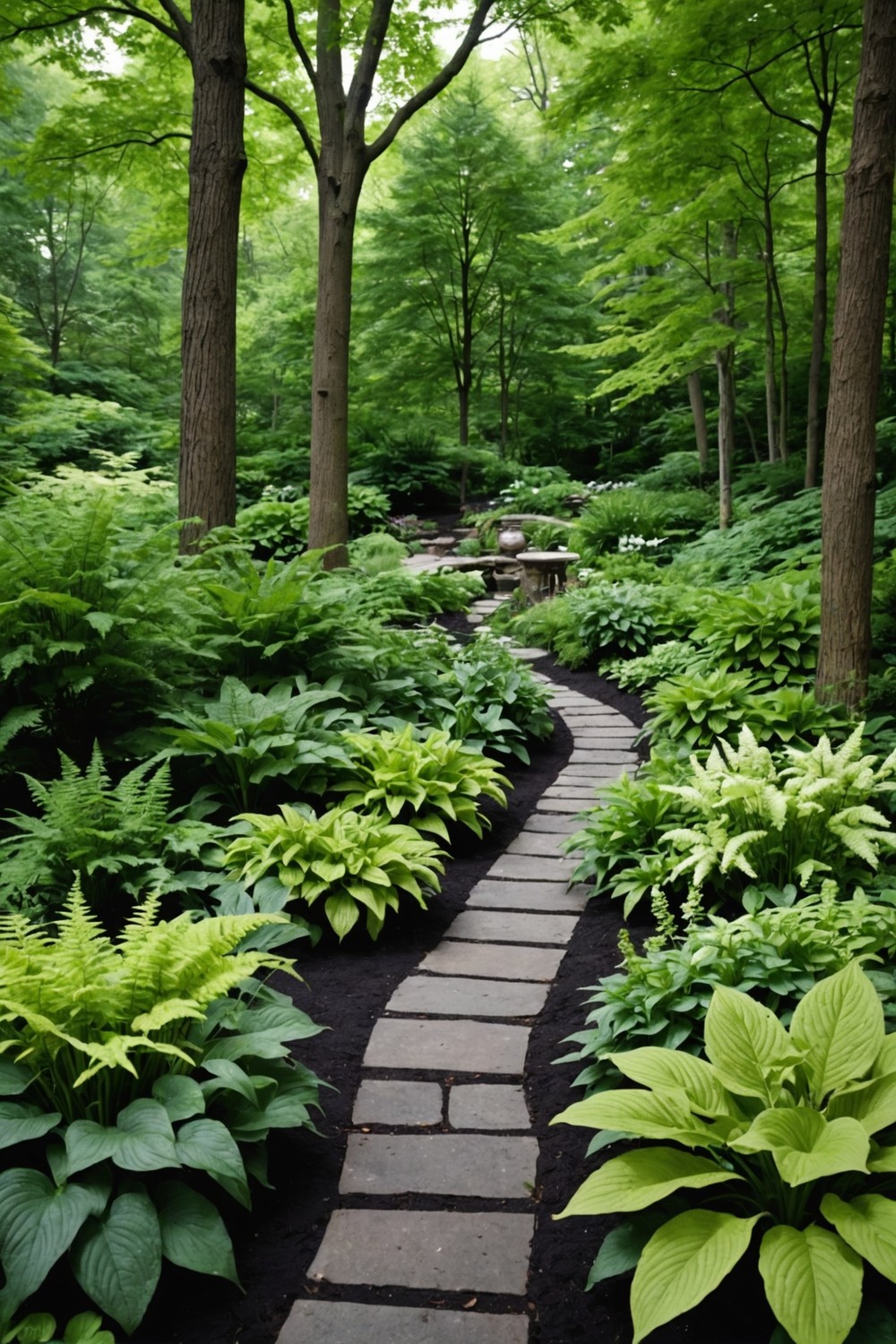
Creating a shade garden is a fantastic way to transform areas of your yard that receive limited sunlight into lush, inviting spaces. Start by selecting shade-tolerant plants—ferns, hostas, and astilbes thrive in lower light.
Layering these plants with varying heights will add depth and texture.
Incorporate features like stepping stones or a shaded seating area to enhance the space. Using mulch will help retain moisture and suppress weeds, making maintenance easier.
With the right plant selections and thoughtful design, a shade garden can become a serene escape.
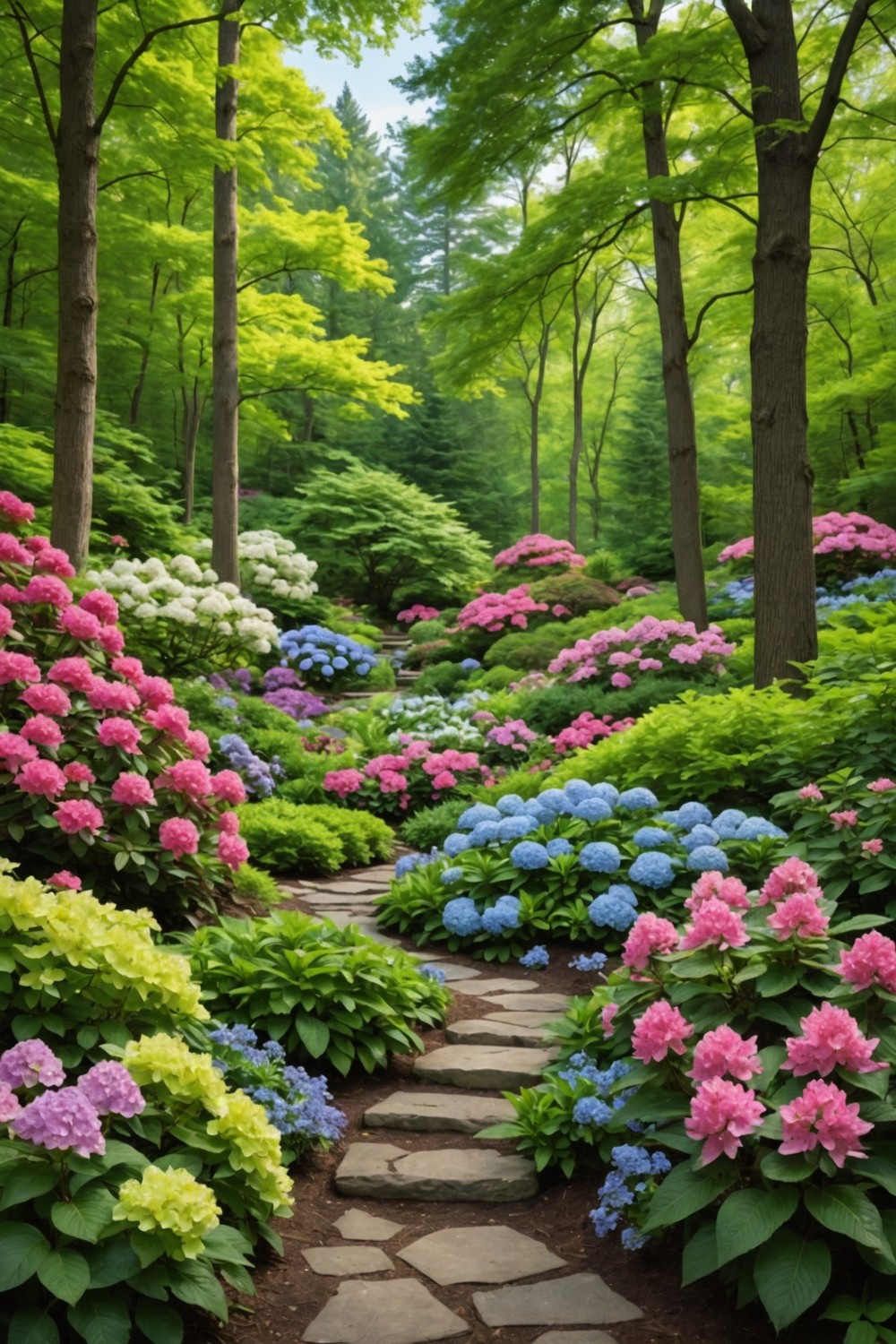
Plant flowering shrubs to infuse color and beauty into your woodland garden. These shrubs not only provide vibrant blooms but also attract pollinators like bees and butterflies, enhancing the ecological balance.
Look for varieties that thrive in partial shade, such as azaleas, rhododendrons, and hydrangeas.
Their seasonal displays will create a stunning backdrop against the lush greenery of your woodland setting. Regular pruning and proper spacing will help maintain their health and aesthetic appeal.
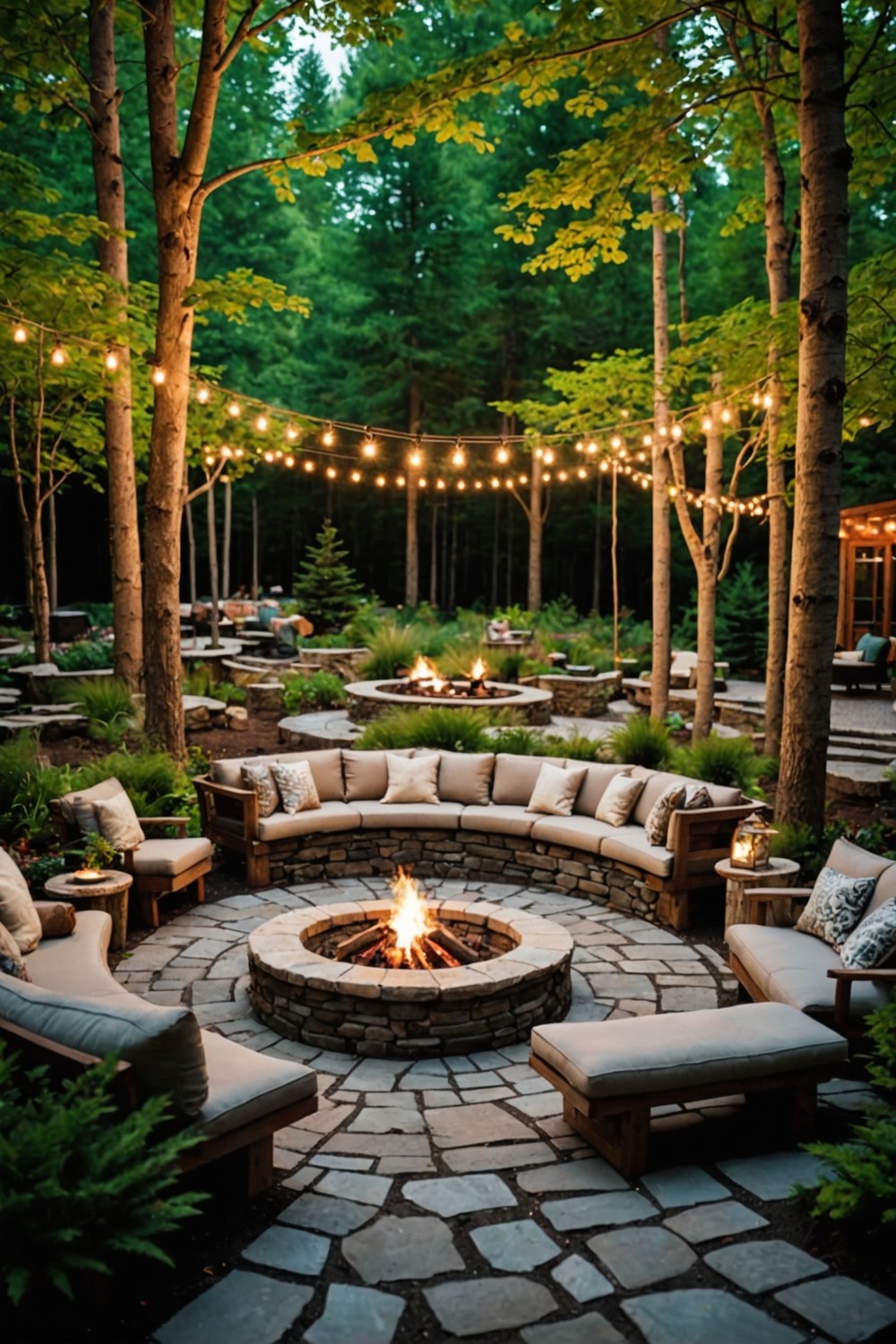
A fire pit area transforms your woodland garden into a cozy gathering spot.
It provides warmth and a focal point for evening relaxation or socializing with friends and family.
Opt for natural materials like stone or wood to blend seamlessly with the landscape.
Surround the fire pit with comfortable seating, such as benches or outdoor cushions, and enhance the ambiance with fairy lights or lanterns nearby.
This inviting space encourages storytelling and creating lasting memories.
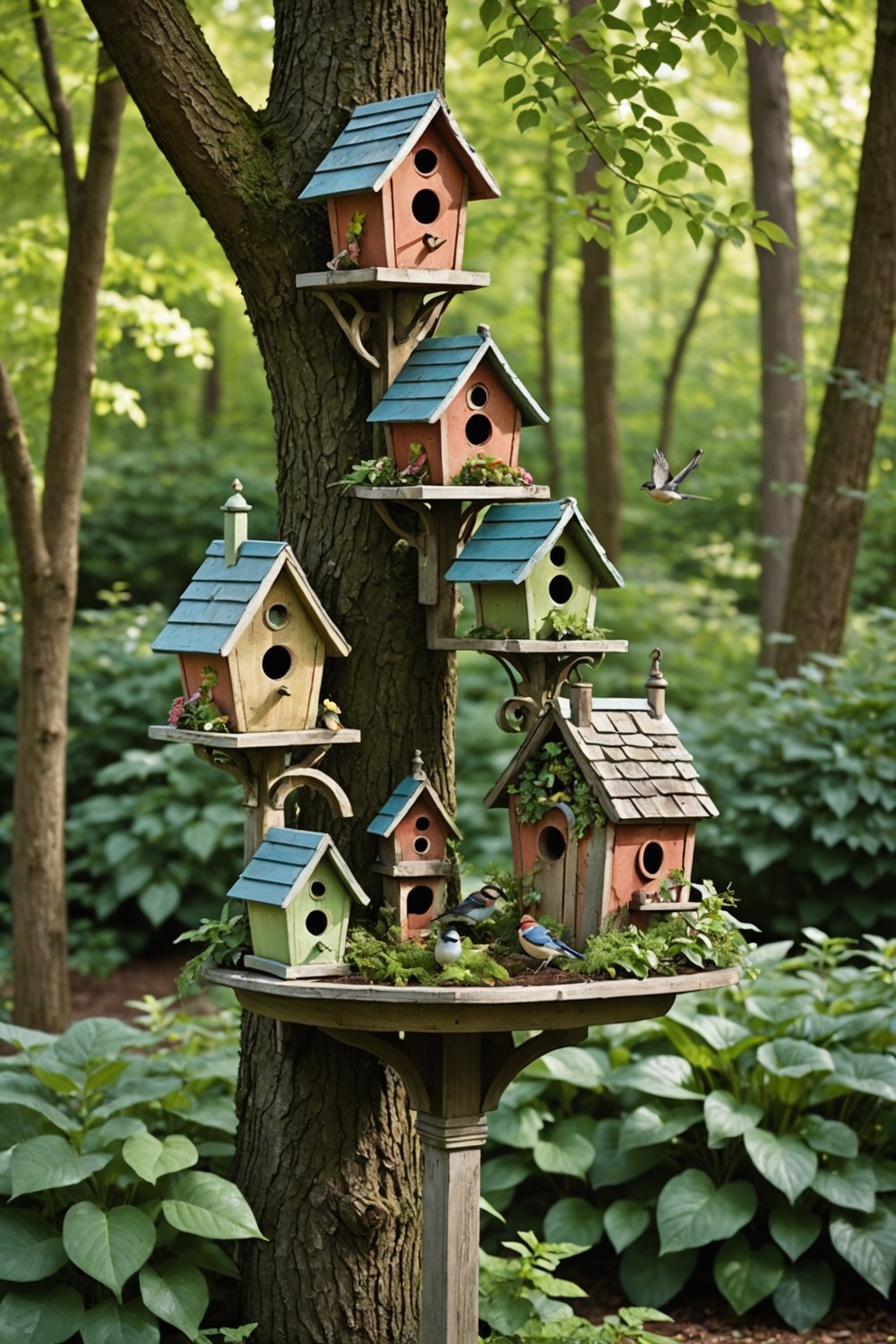
Vintage birdhouses and feeders add charm and character to any woodland garden. These rustic elements not only serve as functional homes and feeding stations for birds, but they also enhance the aesthetic appeal of your outdoor space.
Choose birdhouses with weathered finishes, unique shapes, or intricate carvings to create focal points amidst the greenery.
Pair them with antique-style feeders to attract various bird species, enriching your garden with lively activity and natural beauty.
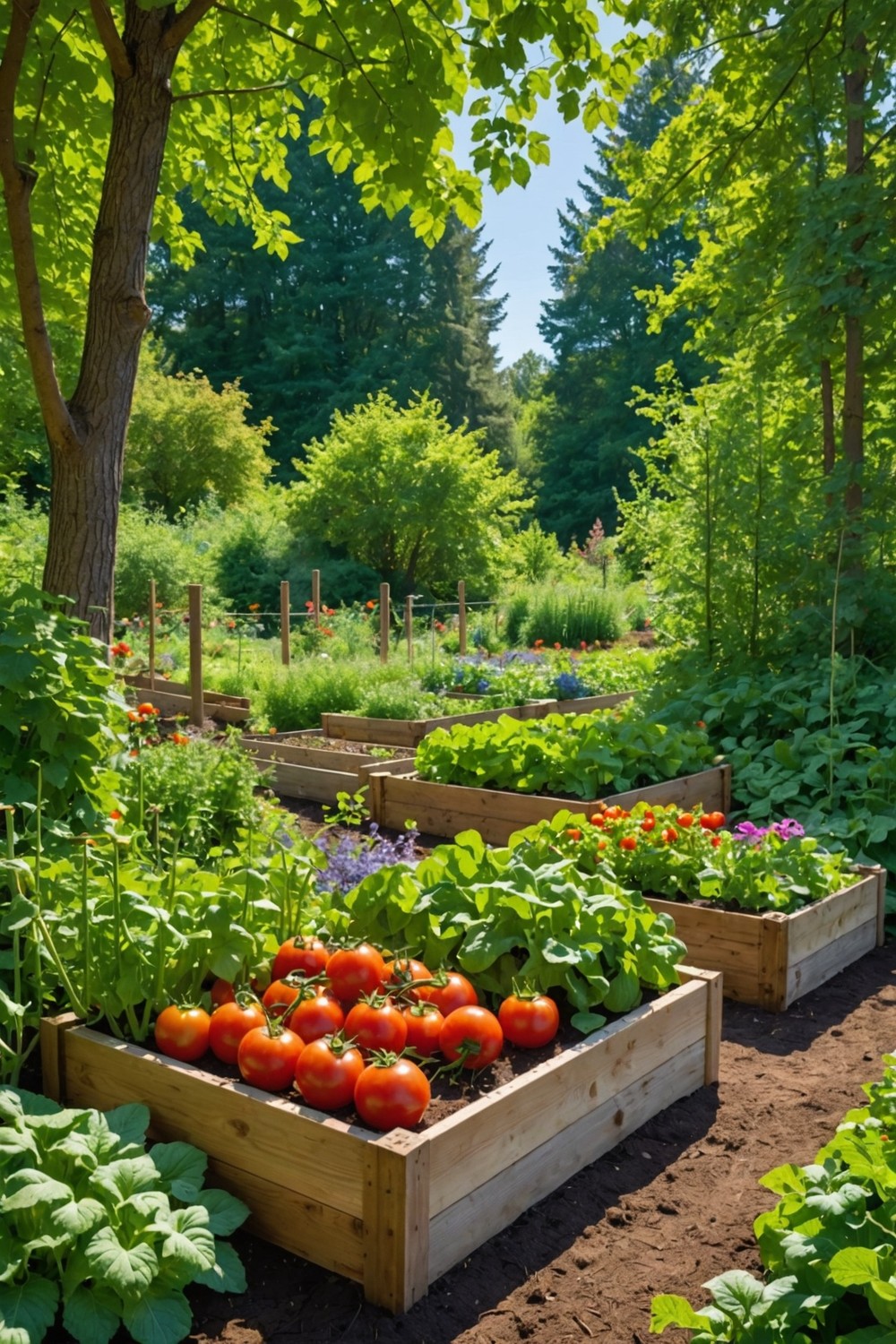
A small vegetable patch can be a delightful addition to your woodland garden.
Start by selecting a sunny spot that receives at least six hours of sunlight daily.
Choose easy-to-grow vegetables like tomatoes, lettuce, or herbs that thrive in your climate.
Raised beds or containers can help improve soil drainage and keep weeds at bay.
Regular watering and mulching will keep the soil healthy while attracting beneficial insects.
This patch not only enhances your garden’s beauty but provides fresh produce right at your doorstep.
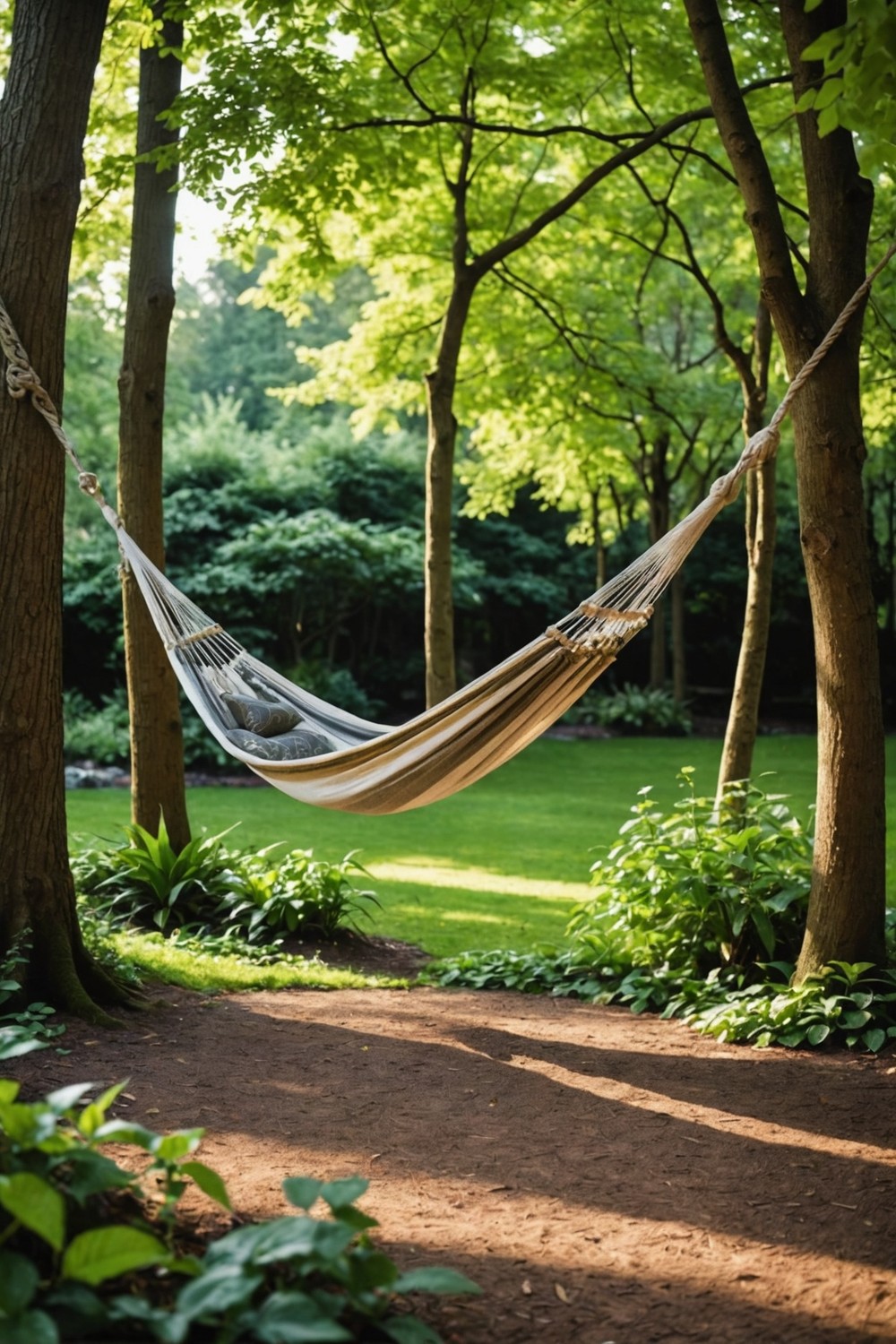
Designing swinging hammock spaces adds a relaxing touch to woodland gardens.
Start by selecting a cozy spot with dappled sunlight and a lovely view.
Consider hanging the hammock between two sturdy trees or using a stylish stand.
Enhance the area with soft cushions and blankets for comfort.
Incorporating natural elements, like wooden side tables or lanterns, will create an inviting atmosphere.
Add some greenery around the hammock to blend it harmoniously with the surrounding nature, transforming it into your serene escape.
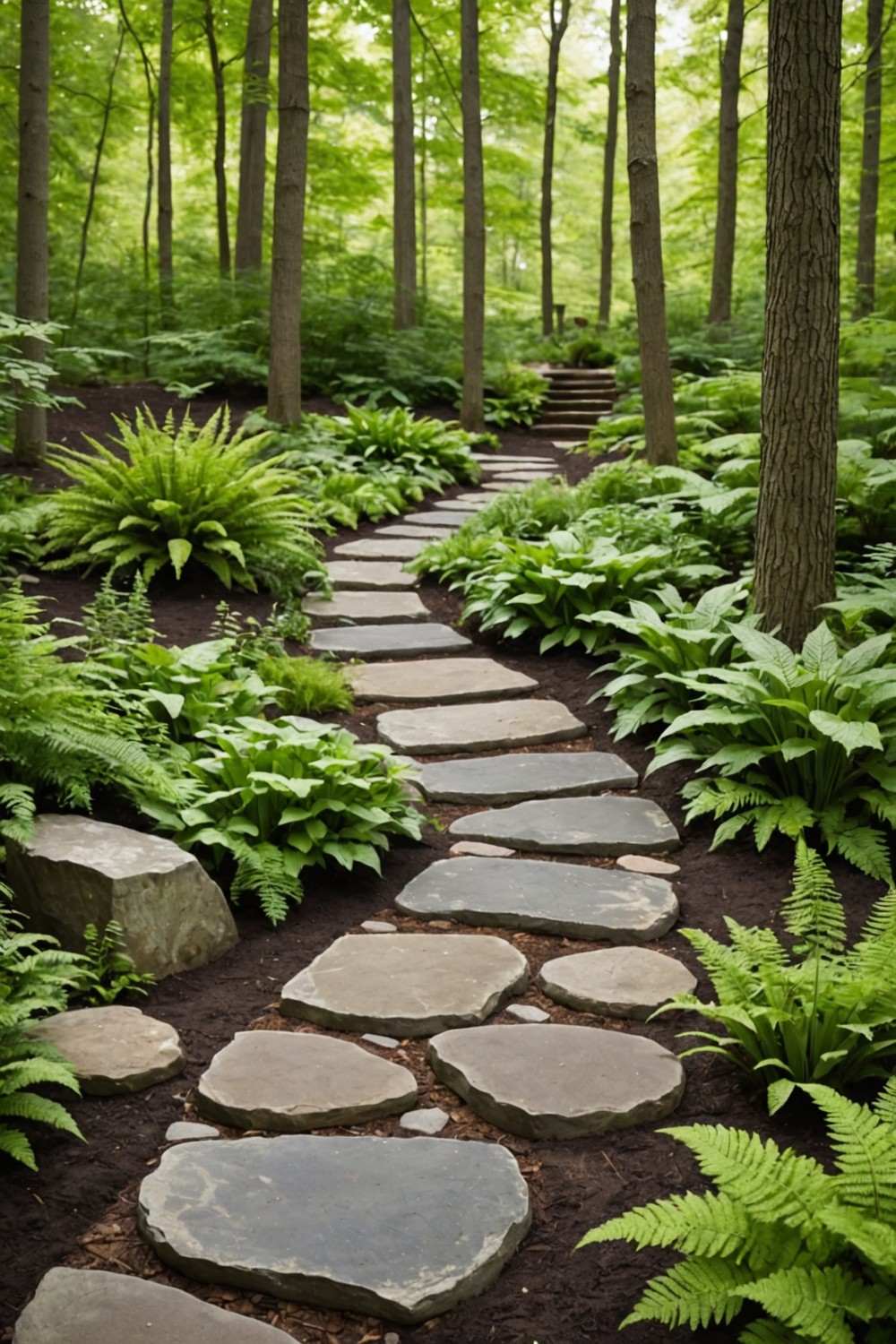
Natural stone stepping stones effortlessly blend beauty and functionality in a woodland garden.
Their earthy tones and organic shapes create a harmonious path that encourages exploration while maintaining a rustic charm.
The variation in stone textures adds visual interest and can enhance the natural landscape.
Plus, they’re durable and low-maintenance, making them an ideal choice for navigating through lush foliage.
Strategically placed stepping stones can also guide visitors through garden spaces, leading to hidden nooks or seating areas.
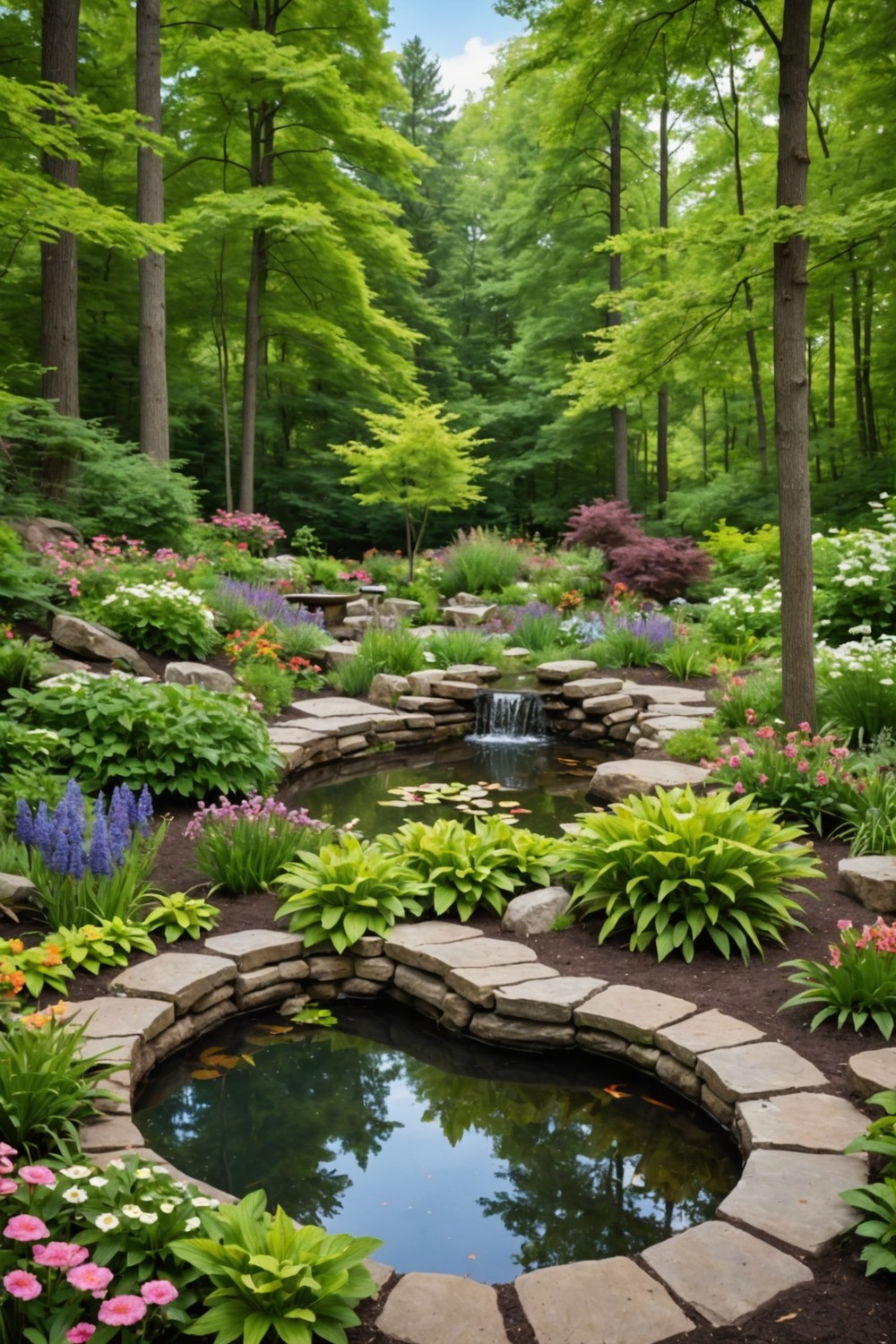
Creating a wildlife habitat involves selecting native plants that attract local wildlife like birds, butterflies, and beneficial insects.
This can be achieved by incorporating a variety of flowers, shrubs, and trees that provide food and shelter.
Adding features such as water sources, like small ponds or birdbaths, encourages visits from fauna.
Additionally, leaving some areas wild with natural debris can foster a diverse ecosystem, allowing wildlife to thrive in your woodland garden.
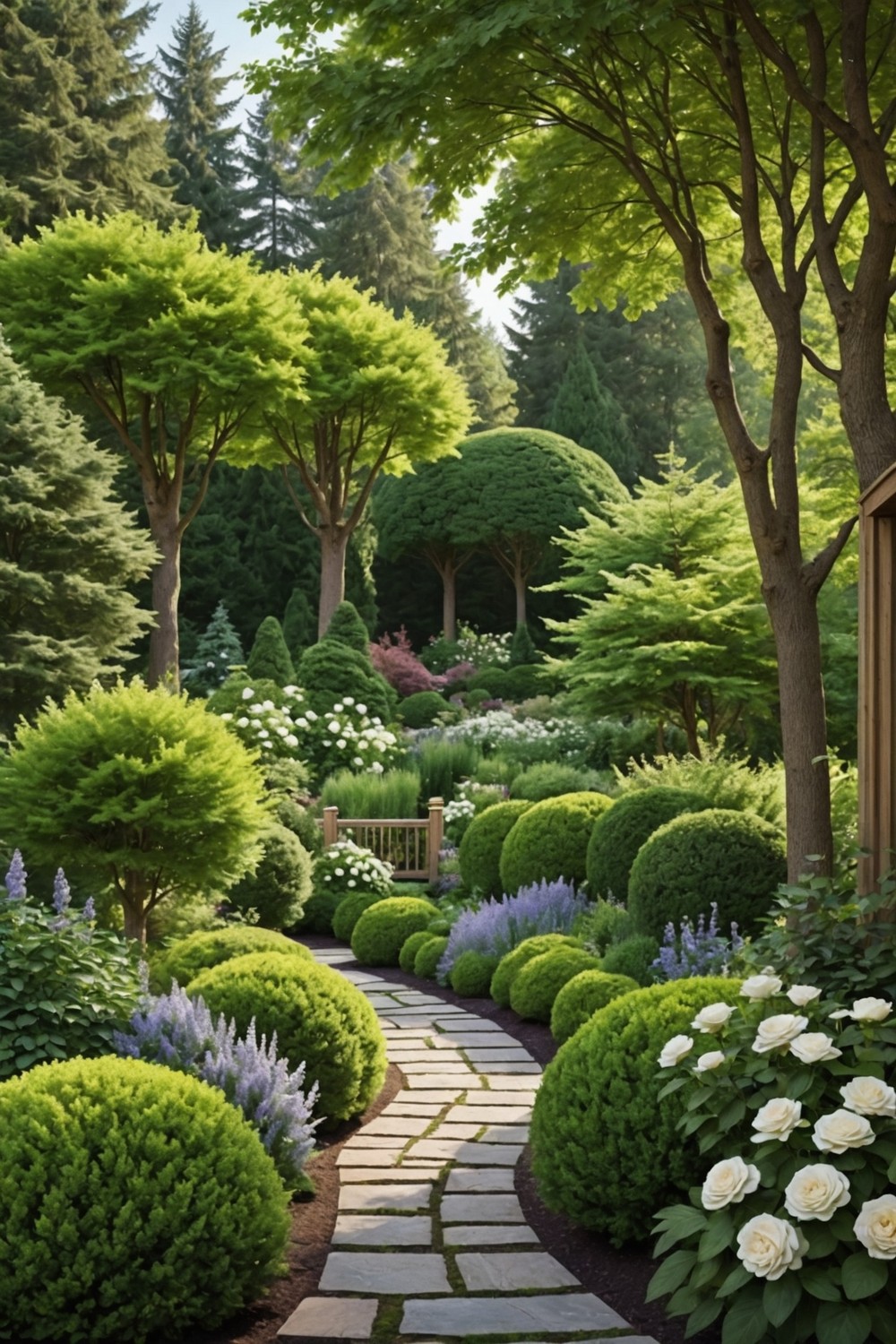
Building a natural privacy screen enhances your woodland garden while providing a tranquil retreat. Use a combination of evergreen trees, tall shrubs, and climbing plants to create layers of greenery.
Options like yew, boxwood, and cedar are perfect for structure, while vines such as clematis and climbing roses can add softness.
Arrange these plants thoughtfully to ensure year-round privacy and beauty, allowing natural elements to harmonize with your garden’s landscape.
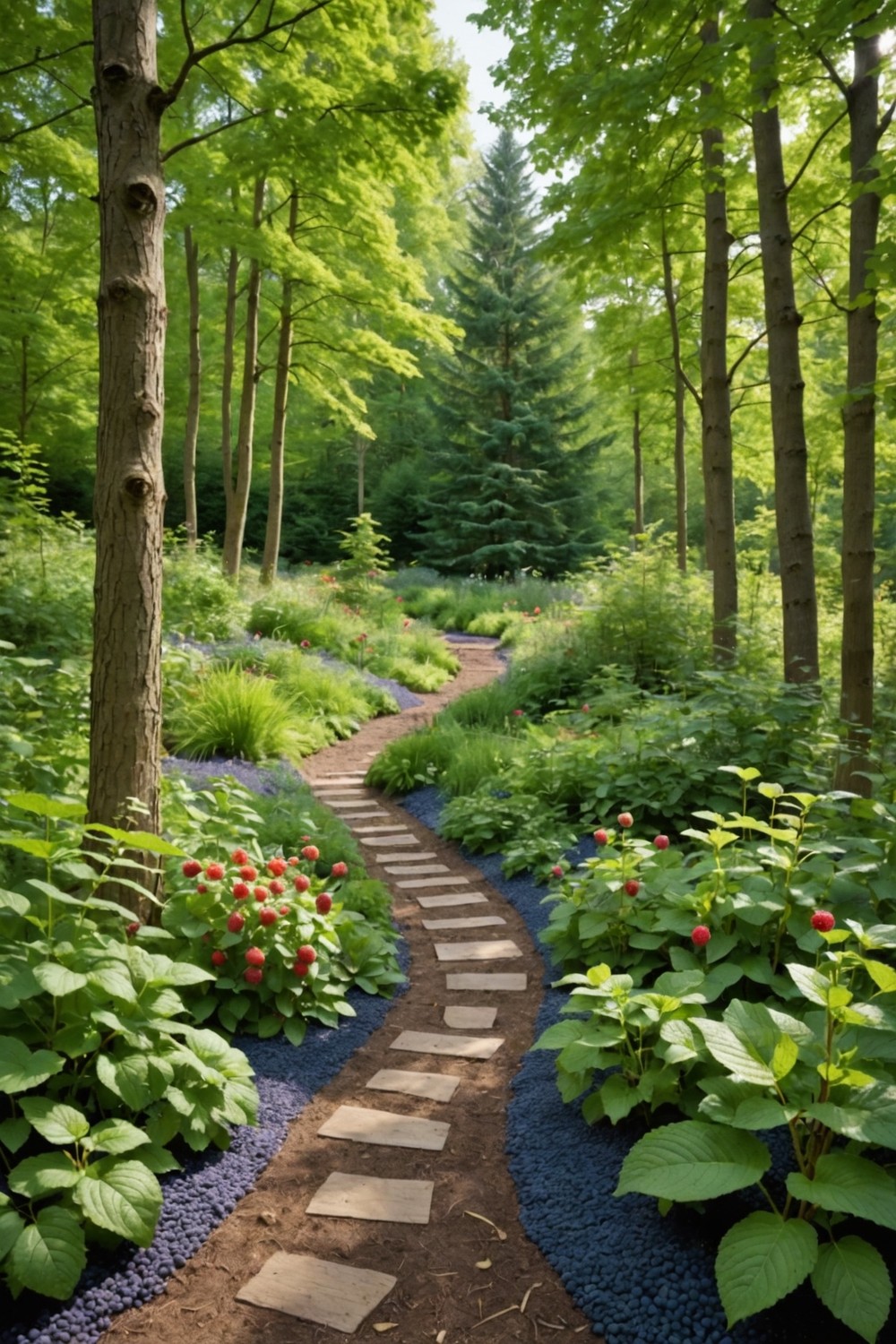
Arranging an edible woodland garden combines beauty and functionality, allowing for a productive space that mimics natural woodland settings.
Start by selecting a mix of perennial fruits, nuts, and vegetables, such as blueberries, raspberries, and hazelnuts, that thrive in dappled sunlight.
Utilize layers of plant heights, with tall trees for shade, mid-height shrubs, and ground-covering plants.
This not only maximizes space but also creates a habitat for wildlife.
Incorporate pathways made of natural materials like wood chips or stones to maintain access while enhancing the rustic feel.
Lastly, consider companion planting to promote health and yield while fostering a lush, inviting atmosphere.
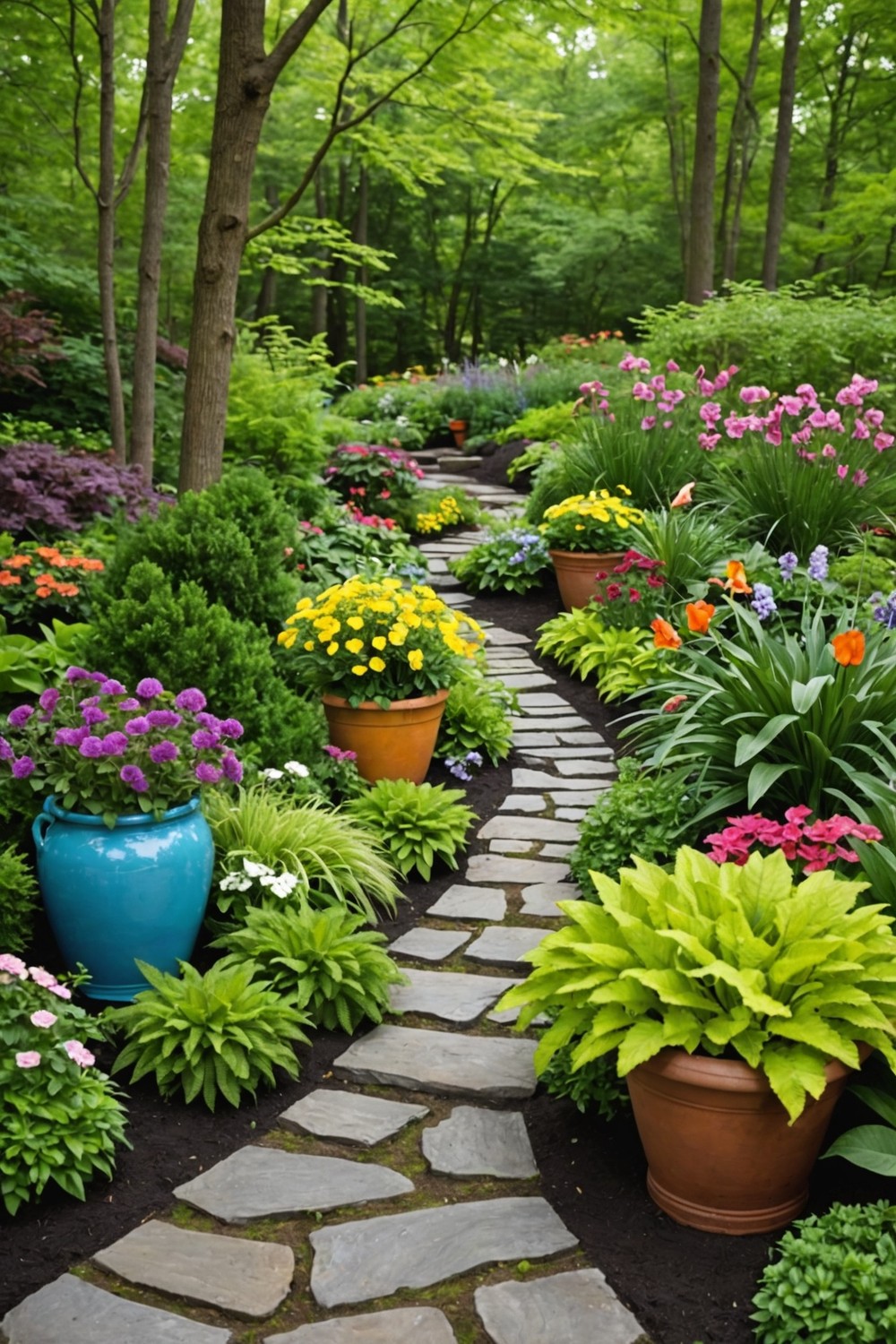
Colorful containers are a fantastic way to add vibrancy and personality to your woodland garden. Choose pots in bright hues or interesting patterns that contrast beautifully with lush green foliage and natural earth tones.
These eye-catching accents can be placed along pathways, among plants, or at focal points to draw the eye and create visual interest.
Pair them with seasonal blooms or delightful herbs for a splash of color that changes throughout the year.
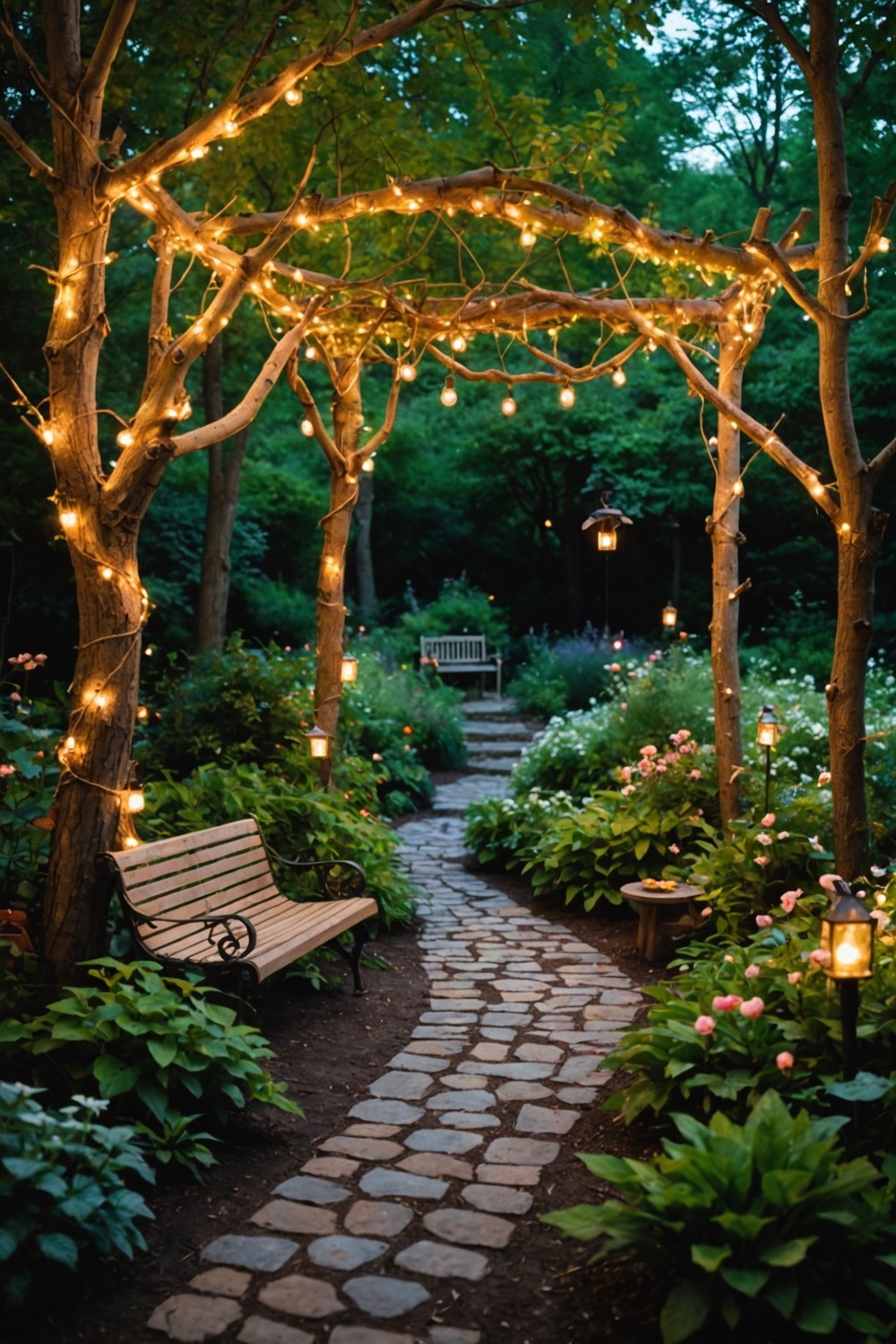
Installing fairy lights instantly transforms a woodland garden into a magical escape.
String them along branches, wrap them around trunks, or drape them over trellises to create enchanting pathways.
Choose warm white lights for a cozy feel or colorful bulbs to add a playful touch.
For an outdoor setting, opt for waterproof options to withstand the elements.
The soft glow will not only highlight the garden’s features but also invite stargazing and relaxation.
